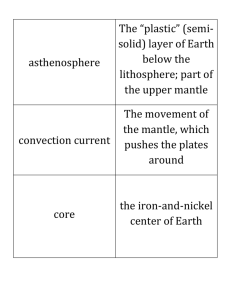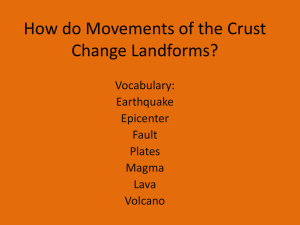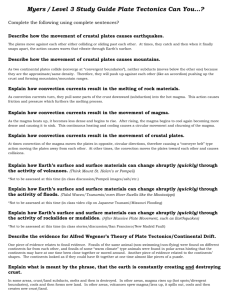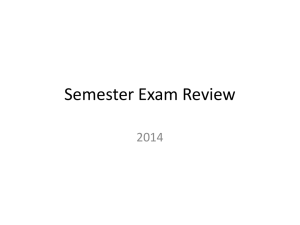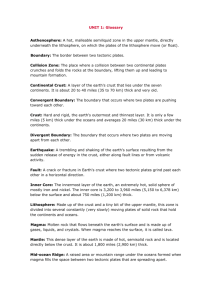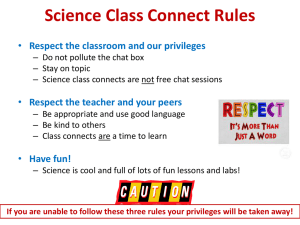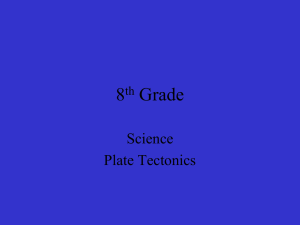Study guide key
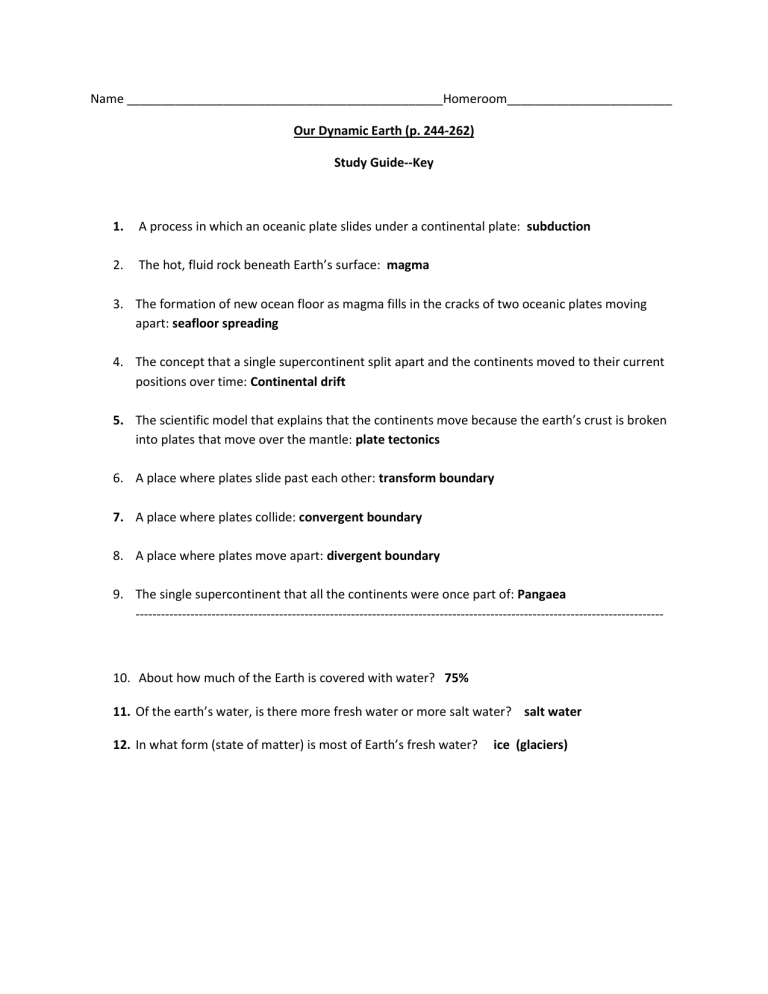
Name ______________________________________________Homeroom________________________
Our Dynamic Earth (p. 244-262)
Study Guide--Key
1.
A process in which an oceanic plate slides under a continental plate: subduction
2.
The hot, fluid rock beneath Earth’s surface: magma
3.
The formation of new ocean floor as magma fills in the cracks of two oceanic plates moving apart: seafloor spreading
4.
The concept that a single supercontinent split apart and the continents moved to their current positions over time: Continental drift
5.
The scientific model that explains that the continents move because the earth’s crust is broken into plates that move over the mantle: plate tectonics
6.
A place where plates slide past each other: transform boundary
7.
A place where plates collide: convergent boundary
8.
A place where plates move apart: divergent boundary
9.
The single supercontinent that all the continents were once part of: Pangaea
-----------------------------------------------------------------------------------------------------------------------------
10.
About how much of the Earth is covered with water? 75%
11.
Of the earth’s water, is there more fresh water or more salt water? salt water
12.
In what form (state of matter) is most of Earth’s fresh water? ice (glaciers)
13.
Draw and label the interior layers of the Earth.
Describe each of the layers:
Crust: solid and rocky; thinnest layer, made up of tectonic plates
Mantle: thickest layer; made of hot, molten rock (magma); has convection currents that move the plates
Outer core: made up of liquid iron and nickel; extremely hot
Inner core: made of solid iron and nickel; under highest pressure
What is the lithosphere? the top part of the mantle and the crust
14.
What name did Alfred Wegener give to the “supercontinent” in his theory of Continental Drift?
Pangaea
15.
What is seafloor spreading and how did it support Wegener’s ideas? Seafloor spreading is when magma comes up through a crack on the ocean floor and hardens into new crust. This supports Wegener’s idea because it shows how the continents move as plates move apart.
16.
Explain what causes plates to move: Heat from the core makes a convection current in the mantle. As magma in the mantle moves, it drags the plates, which are resting on the mantle.
17.
What type of boundary is shown here? divergent boundary
18.
Explain what is happening in the diagram. Plates are moving apart. Magma is filling the crack.
The magma cools and hardens into new crust. This is called seafloor spreading.
19.
What type of boundary is this? Convergent boundary
20.
Explain what is happening in this diagram. The oceanic plate is subducting under the continental plate. Volcanic activity is being caused by the pressure and build-up of magma. A
trench is being formed along the coast.
21.
What type of boundary is this? transform boundary
22.
What natural disaster is happening in this diagram? an earthquake
23.
How did scientists discover the location of the tectonic plates? Scientists mapped the location of earthquakes and volcanoes around the world. They found that earthquakes and volcanoes outlined the plate boundaries.
24.
According to your text, about how many major tectonic plates are found on Earth’s crust? 7
